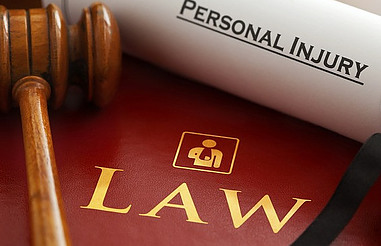
This article outlines the criteria for damages in medical malpractice. Medical malpractice occurs when a healthcare professional or facility fails to provide the appropriate standard of care, resulting in harm or injury to a patient. When pursuing a medical malpractice claim, the injured party (plaintiff) seeks compensation, known as damages, for the losses suffered due to the negligence or misconduct of the healthcare provider.
Several criteria are considered when determining the types and amount of damages awarded in medical malpractice cases. These criteria include:
- 1. Economic Damages: Economic damages aim to compensate the plaintiff for the quantifiable financial losses incurred as a result of the malpractice. They may include:
- a. Medical Expenses: This covers the costs of medical treatments, hospital stays, surgeries, medication, therapy, rehabilitation, and any future medical expenses resulting from the malpractice.
- b. Lost Income: If the plaintiff is unable to work or experiences a decrease in earning capacity due to the malpractice, they may be awarded compensation for lost wages, benefits, and potential future earnings.
- c. Property Damage: In some cases, medical malpractice may result in damage to property, such as medical equipment or prosthetics, which may warrant compensation.
- 2. Non-Economic Damages: Non-economic damages aim to compensate the plaintiff for the intangible losses that are more difficult to quantify. These damages include:
- a. Pain and Suffering:
Compensation for physical pain, emotional distress, mental anguish, and the overall reduction in the quality of life caused by the malpractice. - b. Loss of Consortium: In cases where the malpractice results in the loss of companionship, support, or the ability to maintain a normal marital or familial relationship, damages may be awarded to the affected family members.
 c. Disfigurement and Disability:
c. Disfigurement and Disability:
Compensation for permanent scarring, disfigurement, disability, or loss of bodily functions resulting from the malpractice.- 3. Punitive Damages: Punitive damages may be awarded in cases of extreme negligence or intentional misconduct on the part of the healthcare provider. These damages are intended to punish the defendant and deter similar behavior in the future. However, punitive damages are not awarded in all medical malpractice cases and are subject to specific legal requirements and limitations in many jurisdictions.
- 4. Wrongful Death Damages: In cases where medical malpractice results in the death of the patient, wrongful death damages may be awarded to compensate the surviving family members. These damages may include compensation for funeral expenses, loss of financial support, loss of companionship, and emotional distress.
- 5. Proving Causation: To be awarded damages in a medical malpractice case, the plaintiff must establish a causal link between the healthcare provider’s negligence and the injuries suffered. This requires demonstrating that the healthcare provider’s actions or omissions directly caused harm that would not have occurred otherwise. Expert testimony and medical records are often used to establish the causal connection between the negligence and the resulting damages.
- 6. Mitigation of Damages: Plaintiffs have a duty to mitigate their damages, which means taking reasonable steps to minimize the harm caused by the malpractice. This includes following recommended treatments, attending follow-up appointments, and adhering to prescribed medication regimens. Failure to mitigate damages can affect the amount of compensation awarded, as the defendant may argue that the plaintiff’s own actions or non-compliance contributed to their injuries.
- 7. Statutory Limitations on Damages: Some jurisdictions impose statutory limitations or caps on the amount of damages that can be awarded in medical malpractice cases. These limitations may apply to both economic and non-economic damages, and they vary widely depending on the jurisdiction. It’s important to consult with an attorney familiar with the laws in your specific jurisdiction to understand any potential limitations on the damages you can seek.

- 8. Calculation of Damages: Calculating damages in medical malpractice cases can be complex. Economic damages, such as medical expenses and lost income, can be calculated based on actual financial losses incurred and anticipated future expenses. Non-economic damages, however, are more subjective and can be more challenging to quantify. Factors considered in determining non-economic damages may include the severity of the injuries, the impact on the plaintiff’s life, the duration of pain and suffering, and the effect on relationships and daily activities. Juries or judges often rely on expert testimony, case precedents, and their own judgment to assess the appropriate amount of non-economic damages.
- 9. Comparative Fault: In some jurisdictions, damages may be reduced or even barred if the plaintiff is found partially at fault for their injuries. Comparative fault rules vary by jurisdiction, but they generally assign a percentage of fault to each party involved in the case. The plaintiff’s damages are then reduced by their assigned percentage of fault. However, some jurisdictions follow a “modified comparative fault” rule, where the plaintiff’s damages are reduced if their fault does not exceed a certain threshold (e.g., 50%).
- Conclusion: The criteria for damages in medical malpractice cases encompass a range of factors, including economic losses, non-economic harm, causation, mitigation of damages, statutory limitations, and comparative fault. Proving the connection between the healthcare provider’s negligence and the injuries suffered is crucial, as is seeking expert legal guidance to navigate the complexities of calculating damages and adhering to jurisdiction-specific laws. Ultimately, the goal is to obtain fair compensation that adequately reflects the losses and suffering experienced by the plaintiff due to medical malpractice





